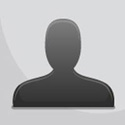
|
|
||
|
We (HPL) have been working with a few different clients recently where there has been a need for proof-of-concept line trials. To me, line trials are a lot of fun! Well, they can and should be. Think of them as a sandbox that we can build out our creative and innovative ideas and concepts to see if they will work in the real world. However, to be effective
Given the importance of proof-of-concept line trials, HPL has created two documents to help plan and execute effective line trials, as follows:
Both documents are available for free download from our HPL tools page using this link.
While recently reading “Leadership Moments from NASA, Achieving the impossible“, by Dr. Dave Williams, one of the statements in the end of a chapters ‘Leadership Insights’ stated:
“Simulation creates an environment where failure is a safe opportunity for learning.”
Although the quote was referring to space flight training and simulation, the same is very applicable to proof-of-concept line trials. Really, the only failure of a line trial is not to follow a proper PDCA process because something may negatively or falsely impact the trial. Even when the trial doesn’t produce the desired result, it should not be deemed a failure when line trials are made to be a safe time and place for those involved to experiment and learn. So even if a line trial results in a less than expected or disappointing outcome, as long as we’ve learned from it, it’s a great successful failure!
Let us know what you think of these tools or if we've missed anything!
Glenn
|
||
|
||
|
||
|
||
|

|
|
HPL Administrator 7 November 29, 2024 |

|
|
Sabrina Sommerville 1 August 15, 2024 |

|
|
Glenn Sommerville 45 June 6, 2024 |